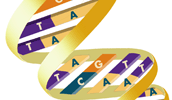- Introduction
- Careers
- Undergraduate Research
- Curriculum
- Admissions
- Contacts
- Advisory Board
- Affiliated Faculty
- News

Introduction

The undergraduate Bachelor of Science in Quantitative Biology major is an interdisciplinary program offered in collaboration between the Departments of Biological Sciences and Mathematical Sciences at the University of Delaware. It was designed for students who like math and biology and want to pursue and integrate both interests in their college career. This program is for students who enjoy the challenge of solving interesting and important biological problems.

Biological pattern formation. (right) from Maini et al, Science 314:1397 (2006). Reprinted with permission from AAAS.
More than ever, advancements in biology, from the molecular through the organismal to the ecosystem level, require quantitative thinking along with a conceptual understanding of the physical sciences. As Galileo wrote "the book of nature is written in the language of mathematics." Similarly Lord Kelvin remarked "If you can't measure something in numbers, your knowledge of it is not really scientific." The Quantitative Biology curriculum, supported by a major grant from the Howard Hughes Medical Institute, addresses the needs of 21st-century biology in ways not met by traditional biology or mathematics curricula [1, 2]. Graduates of the Quantitative Biology major will be prepared for postgraduate education and a wide variety of careers in industry, medicine, public health, government, and education.
Read more on the learning environment for majors in Quantitative Biology by following this link.
Click here to view a video about the Quantitative Biology major.
- William Bialek and David Botstein (2004), Introductory Science and Mathematics Education for 21st-Century Biologists, Science 303, 788-790.
- National Research Council (2002), Bio 2010: Transforming Undergraduate Education for Future Research Biologists, National Academy Press, Washington, DC.
